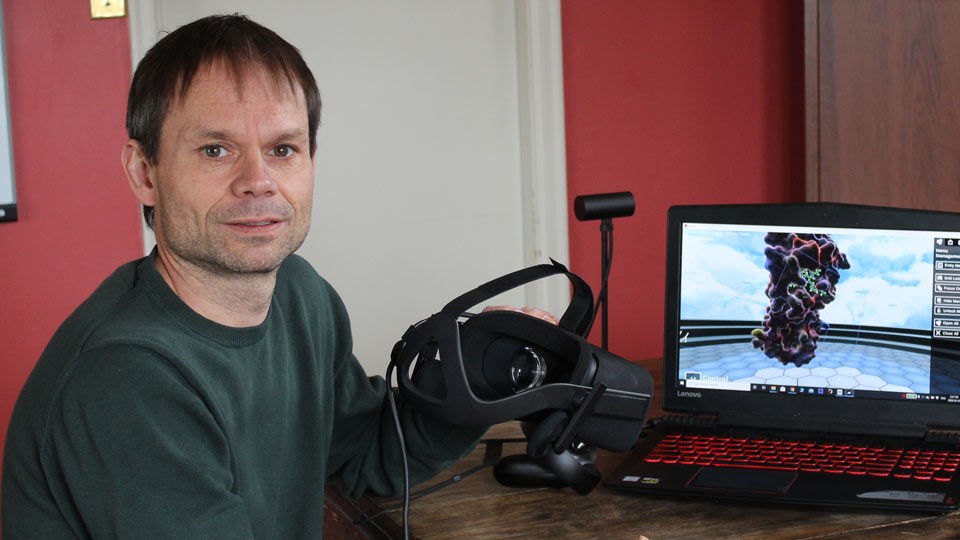A researcher at Laurentian University is joining scientists from across the planet in using virtual reality to study and come up with ways to disrupt the COVID-19 virus.
Stefan Siemann, a professor of chemistry and biochemistry at the Sudbury university, said such work could eventually lead to a drug to combat the virus.
He said his research normally focuses on proteins and enzymes, especially those that contain metal.
In terms of COVID-19, scientists in the UK have identified one of the main proteins in the virus.
In a type of crowdsourcing as part of the “Moonshot Project,” scientists – including Siemann – have been asked to find ways they can use that protein to stop the replication of the COVID-19 virus.
“This protein is absolutely critical to the replication of the virus,” he said.
“It's a protein that chops a giant protein up into small pieces. Those pieces are functional pieces. The virus needs those to operate and to replicate.
“If you block this one protein, then that chopping action doesn't happen, then the virus is essentially non-functional, and your immune system will eventually take care of it.”
Want to read more stories about business in the North? Subscribe to our newsletter.
The Moonshot Project calls for researchers to build a molecule out of small fragments (think Lego) that can be lodged in a cave-like area of the protein, which would stop the chopping action, and thus the virus' replication.
“This cave is absolutely essential,” Siemann said. “That's where that chopping actually happens. If you squeeze something in, then there's no chopping.”
To put together these “Lego pieces” and build a molecule, Siemann uses a new virtual reality technology.
“It allows you to directly interact in that space with other fellow scientists,” he said.
“You can enter a virtual room in 3D, and you can see the other scientists, and you can talk to them and you can show them things, and they can show you things. It's very collaborative.”
In an interview at the end of March, Siemann said scientists from around the world had already submitted about 2,000 molecules to the Moonshot Project.
“It's definitely a good start,” he said.
As for developing a new drug based on this research, Siemann said that could take a long time, as will developing a vaccine against COVID-19 – estimates are around 18 months.
But he said perhaps there's already an approved drug out there that could work against the virus – the AIDS and SARS viruses are similar in structure.
“It would be much, much quicker, because we already know the side effects,” Siemann said.
He said the COVID-19 situation is “definitely scary and frightening.”
“My main concern, personally, is that we don't wait long enough to really wait it out in terms of the self-isolation,” Siemann said. “Even if there's one remaining person that hasn't waited long enough, it can start the second wave.”




